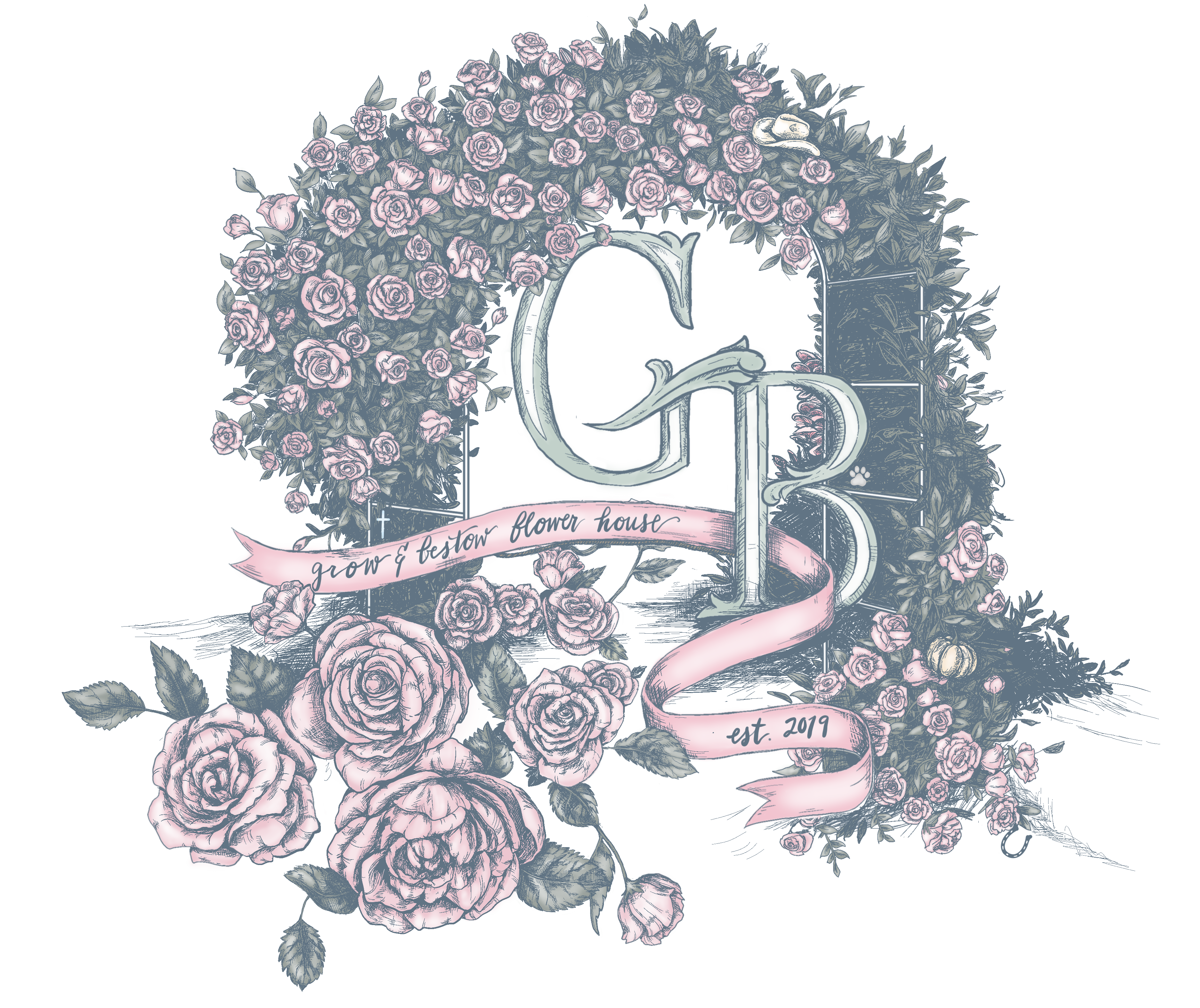Being just eighteen miles from the coast, we live in an area that gets strong winds throughout the year. Proper support and trellising have been crucial to the viability of our plants and flowers. There are many different methods of adding support to growing spaces and we definitely have a couple favorites.
We mainly utilize two types of support with our most often used being a type of netting called Hortonova. Our second most used support is livestock panels.

Hortonova Netting
Polypropylene netting called Hortonova, can be used horizontally and vertically. It comes in many widths and lengths, making it perfect for every garden. We utilize this type of support horizontally on anything that is prone to be blown over in the wind. Those flowers include dahlias, gladiolus, zinnias, snapdragons, scabiosa, lisianthus, foxglove, larkspur, delphinium, and many more.
Plants, stems, and blooms find their way up and through the netting on their own, rarely needing help. We use either wooden spindles or rebar to stake the netting on the ends and middle of beds.
For sweet peas and other vining flowers, we run the Hortonova vertically attaching the ends to t-posts. This allows the tendrils to grasp and climb the netting.


We make an effort to plant dahlia varieties of similar height together because taller varieties can benefit from two levels of support.


One con we have found regarding Hortonova is that it can sometimes be a challenge to harvest stems because the leaves will get caught. That being said, it hasn’t deterred us from using it in 90% of our gardens.
Livestock Panels


Season after season, galvanized cattle panels have been a sturdy option for us . It is a great option for both arch trellises and vertical wall trellising. I use these panels to support crops like squash (left), pole beans (right), luffa gourds, as well as smaller watermelon varieties, honeydews, cantaloupe, indeterminate tomatoes, and cucumbers. Since our main focus is now cut flowers, they serve as a structure for clematis, roses, jasmine and other vining flowers. Arches are buried in our beds and held in place with fencing staples. You can also reinforce the arches with t-posts on either side. We’ve only had one lean over and need reinforcing due to having weight unevenly distributed. This was a result of a planting error on my part.




Chinese noodle beans shown above, are a farm favorite to grow on panels. The beans, which are over a foot long, hang down for a fun and magical look in the garden.
I added a panel onto our studio, which is flanked by the Rose Garden and the North Garden. We planted Jasminum Polyanthum at the base and we’re excited to see the trellis covered in fragrant flowers and wispy vines in the future.


Decorative Support
In addition to the Hortonova and galvanized panels, we’ve used various other supports that were decorative but also functional. Trying a natural resource approach, we used bamboo for bush beans and tomatoes.


For roses we’ve added cloche style support, obelisks and panel trellises. We often utilize our perimeter fencing for climbing roses.






We try to meld aesthetics with functionality while maintaining cost efficiency throughout our garden plans. When faced with dropping funds on support versus new plants, I will always choose to add a few more plants.
If you enjoyed this post, check out our lisianthus post.



